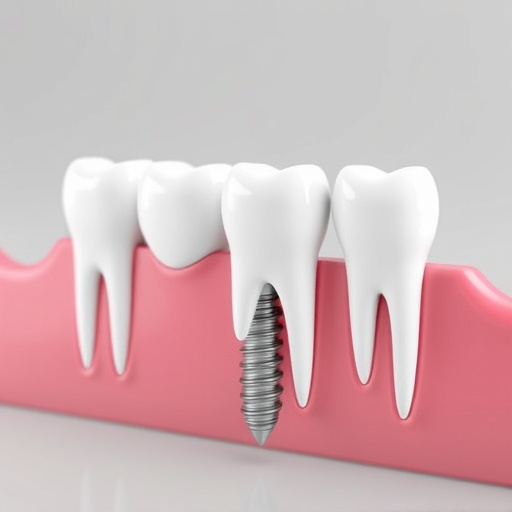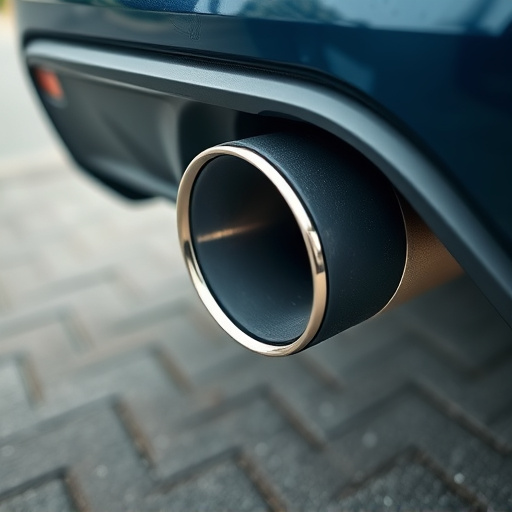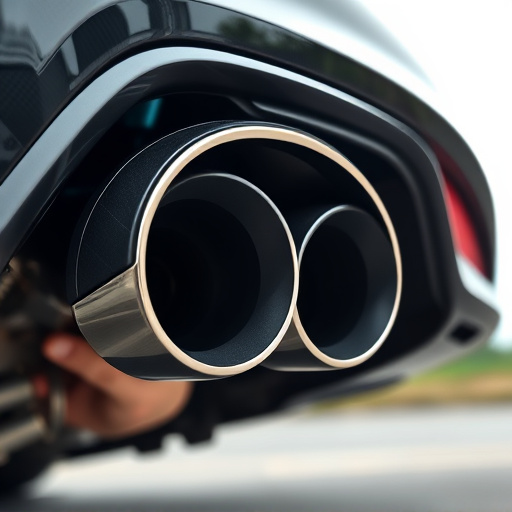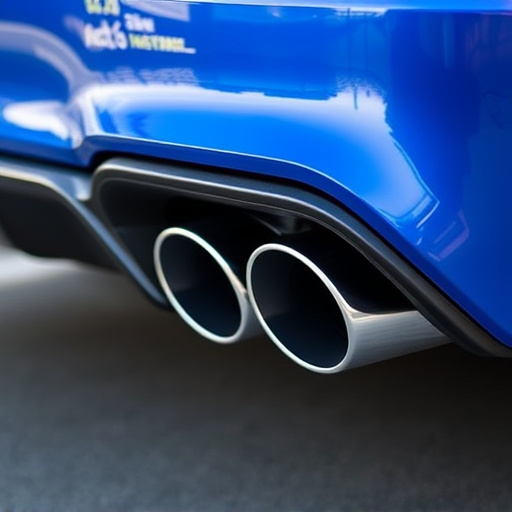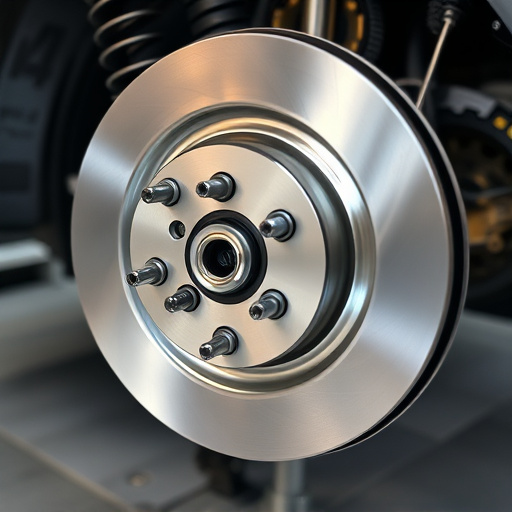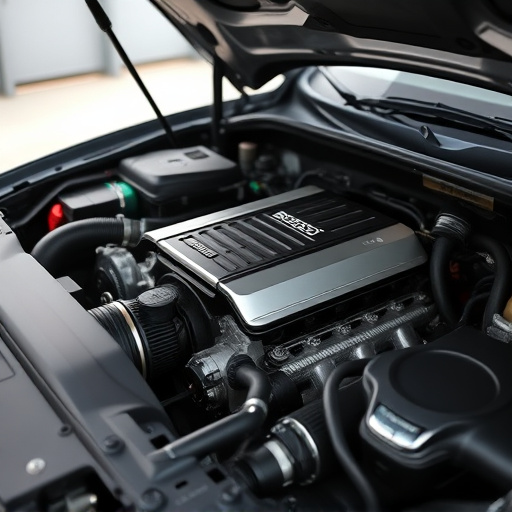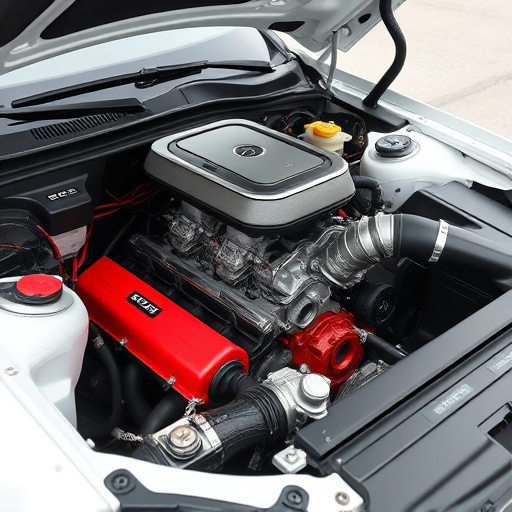A car's suspension system, comprising springs, shocks, struts, control arms, ball joints, and bushings, is crucial for a safe and smooth ride. Issues like bumpy rides or reduced cornering ability can stem from worn-out components. Regular inspection and understanding of these car suspension parts are vital for maintenance. Upgrades like suspension kits can enhance performance, but modifications like cold air intakes or performance exhausts may only cause problems if mechanical issues arise.
Diagnosing car suspension problems quickly is essential for maintaining optimal vehicle performance and safety. This guide will help you navigate the intricate world of your car’s suspension system, from its fundamental components to common issues that can affect handling and stability. By understanding the signs of wear and tear on parts like shocks, struts, and control arms, you’ll be able to perform a basic visual inspection and road test to identify problems. Learn when to consult a professional mechanic for more advanced diagnostics.
- Understanding Your Car's Suspension System
- – Components of the suspension system explained
- – Purpose and functions of each part
Understanding Your Car's Suspension System
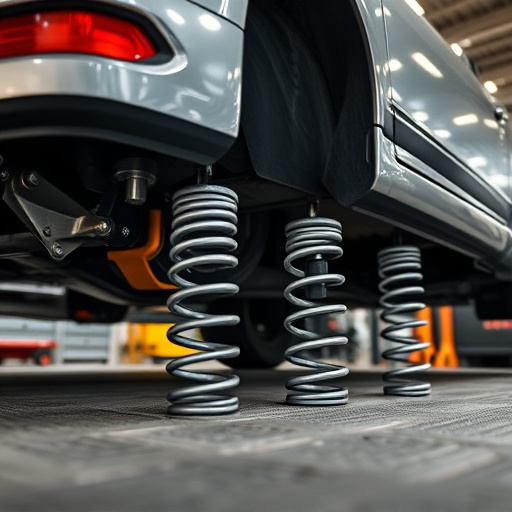
Your car’s suspension system is a complex network of components that work together to provide a smooth ride and maintain control while driving. At its core are several key parts, each playing a vital role in ensuring your vehicle handles well and remains stable. The car suspension parts include springs, shock absorbers (or dampers), struts, control arms, ball joints, and bushings. These elements collectively absorb road impacts, keep the wheels aligned, and enable your car to navigate turns effectively.
Understanding how these car suspension parts interact is crucial for diagnosing problems quickly. For instance, worn-out or damaged springs can lead to a bumpy ride and reduced handling ability. Leaky or broken shock absorbers may cause excessive body roll in corners and an unstable feel while driving. Upgrades like cold air intakes or performance exhausts, while enhancing engine performance, should not negatively impact suspension unless there are related mechanical issues. If you suspect a problem, consider recent modifications, such as installation of suspension kits, as potential factors before diving into a detailed diagnostic process.
– Components of the suspension system explained
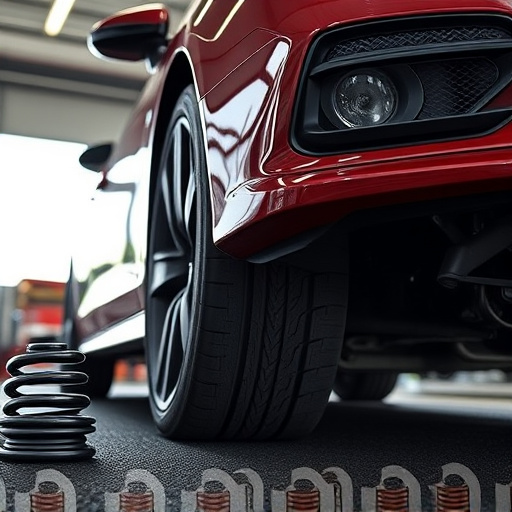
The car suspension system is a complex network of parts that work together to ensure your vehicle’s smooth ride and stability. At its core are several key components: springs, shock absorbers (or struts), control arms, ball joints, and bushings. Springs, typically made of steel or composite materials, are responsible for absorbing road impacts and maintaining a comfortable ride height. Shock absorbers play a dual role in dampening road vibrations and helping to steer the vehicle by controlling the up-and-down motion of the suspension. Control arms connect the steering knuckle to the chassis, enabling smooth turning while also supporting the weight of the vehicle. Ball joints facilitate the rotation of wheels during turns, while bushings provide cushioning and reduce noise between various suspension parts.
Regularly inspecting these car suspension parts is crucial for maintaining optimal vehicle performance and safety. Issues like worn-out springs, damaged shock absorbers, or loose bushings can lead to noticeable driving problems, such as a bumpy ride, unusual tire wear, or even loss of control. To diagnose problems quickly, it’s helpful to familiarize yourself with your vehicle’s suspension layout, check for visible signs of damage or wear, and consider replacing components like air filter kits or intake components if they’re contributing to the issue, along with examining critical parts like brake pads that can also impact suspension performance.
– Purpose and functions of each part
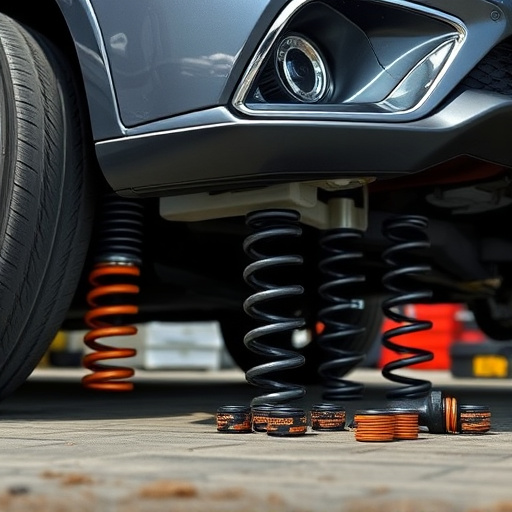
The car suspension system is a complex network of parts designed to ensure optimal vehicle control, stability, and comfort during driving. Each component plays a crucial role in achieving smooth ride quality and precise handling. For instance, car suspension parts like shocks and struts absorb road imperfections, maintaining tire contact with the pavement. Springs assist in supporting the vehicle’s weight and controlling body roll while cornering, enhancing overall performance air filters efficiency. Additionally, stabilizers and control arms facilitate wheel alignment, ensuring proper tire wear and improved performance exhaust systems’ functionality.
Moreover, brake components, an integral part of the suspension system, are responsible for enabling controlled deceleration. Discs, pads, and calipers work together to convert kinetic energy into heat, effectively slowing down the vehicle. Proper functioning of these parts is not only vital for safety but also influences the overall driving experience, making quick diagnosis of any related problems essential to maintain vehicle performance and passenger comfort.
Diagnosing car suspension parts-related issues promptly is crucial for maintaining optimal vehicle performance and safety. By understanding the components and their functions, as outlined in this article, you can quickly identify problems like worn shocks, damaged struts, or faulty ball joints. Regular maintenance and timely repairs ensure a smooth ride, improved handling, and extended lifespan of your car’s suspension system, thereby enhancing overall driving experience.


